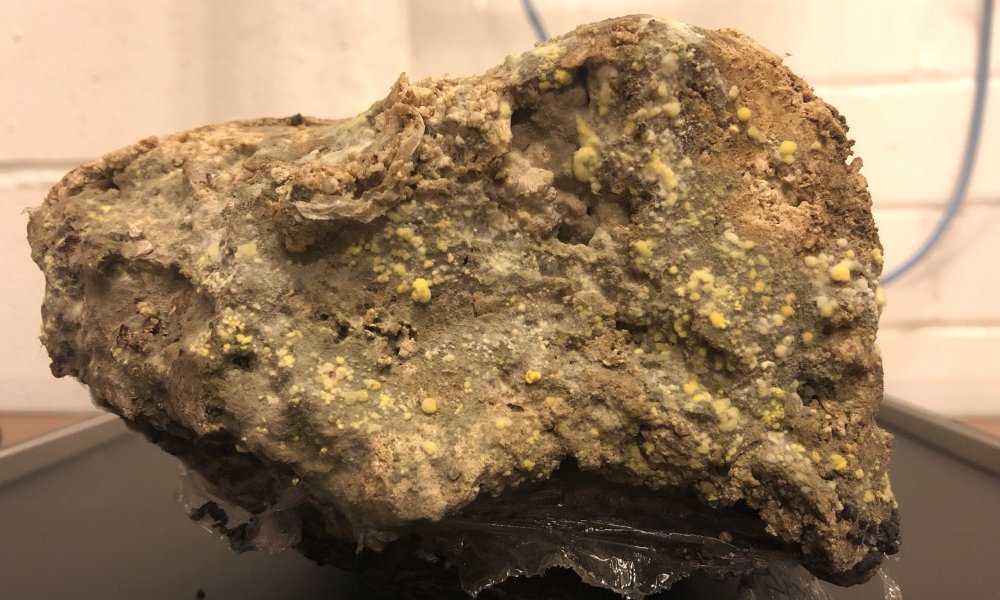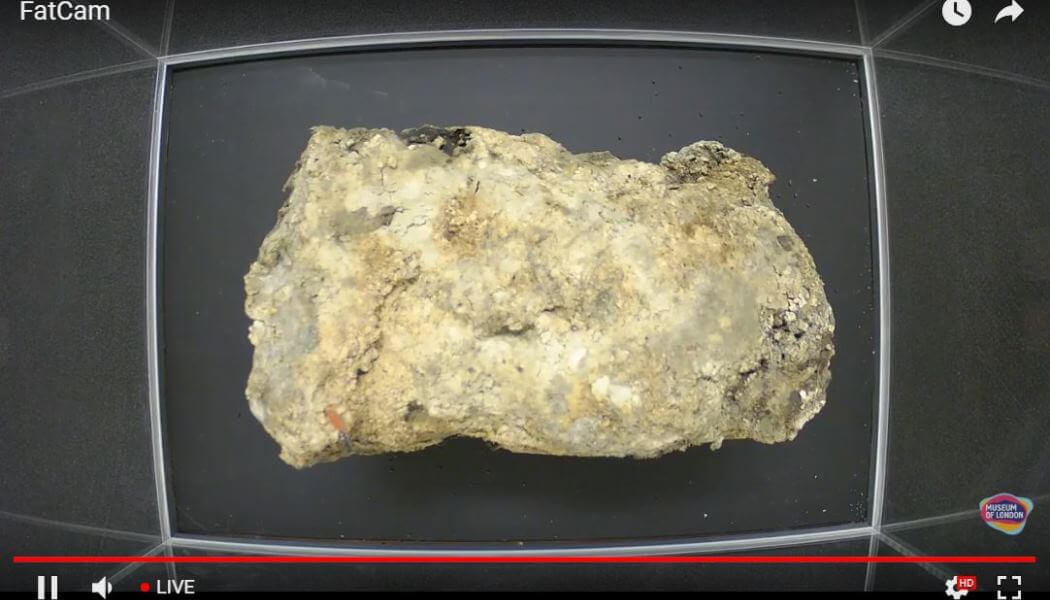Following on from the successful exhibition Fatberg!, which closed on 1 July, the Museum of London has decided that the last remaining parts of the Whitechapel fatberg deserved a permanent home and audience.
The highly toxic pieces of sewage, made up of among other things oil, grease, sanitary products and wet wipes (93 per cent), is being stored in quarantine at the museum’s store and has been fitted with a bespoke case with cameras to livestream it growth.
During its public display from February to July, the fatberg hatched flies, sweated and changed colour. Since going off display, fatberg has started to grow an unusual and toxic mould, in the form of visible yellow pustules, which has been identified as aspergillus. Conservators believe that fatberg started to grow the spores while on display and now a month later, these spores have become more visible.

“The samples of the Whitechapel fatberg have proven to be very powerful museum objects, provoking strong feelings of fascination and disgust in our visitors whilst encouraging them to reflect on a serious challenge facing the city,” said Vyki Sparkes, Curator of Social and Working History at the Museum of London.

“Fatbergs are created by people and businesses who discard fat and rubbish into our historic sewer system. By adding these samples to our permanent collections we are preserving material evidence of how we live now, and, as we change our habits and attitudes, fatbergs could well become history. The fatberg livestream means these samples can entertain and educate people around the world.”
The fatberg is unlike any material the museum has ever dealt with before and it very much remains a live experiment as conservators and collection care staff monitor the mould and work to control it.










